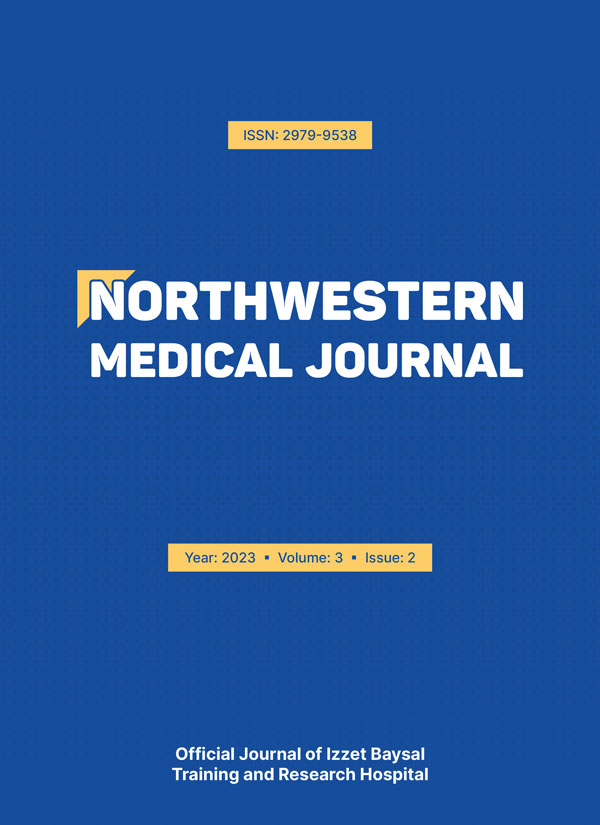Abstract
Aim: This study aims to evaluate the relationship between body mass index and navicular drop in healthy young individuals by considering gender differences. In addition, it is to support the literature for a better understanding of the effect of the foot on the balance mechanisms and to contribute to the development of new approaches in addition to the existing treatment approaches.
Methods: A hundred medical school students between the ages of 18-25 were included in our study. The participants’ age, height, and weight information were recorded, and body mass index (BMI) was calculated. The navicular drop test was performed to measure the pronation response of the foot.
Results: The mean±SD values of the determined parameters in men and women were as follows respectively: Age: 20 and 20; Height (cm): 179±12.7 and 163±0.05, Weight (kg): 78.8±5.3 and 54.5; BMI (kg/m2): 24.4±3.5 and 20.2, right navicular tubercle height in a sitting position (SNTR): 43.7±4.8 and 38.7±5.1; right navicular tubercle height in a standing position (StNTR): 36.4±4.2 and 24.9±4.8; the navicular drop rate of the right foot (NDRR): 7.2±4.2 and 7.2±5.3; left navicular tubercle height in a sitting position (SNTL): 37.2±3.5 and 32.3±5.3; left navicular tubercle height in a standing position (StNTL): 30±4.7 and 31.5±5.2; the navicular drop rate of the left foot (NDRL): 7.2±4.7 and 7.4±4.6.
Conclusion: As a result of our study, it is seen that an insignificant change in the rate of navicular drop as the body mass index increases in men and women.
Keywords: Body mass index, foot, navicular, pronation response
Copyright and license
Copyright © 2023 The Author(s). This is an open-access article published by Bolu İzzet Baysal Training and Research Hospital under the terms of the Creative Commons Attribution License (CC BY) which permits unrestricted use, distribution, and reproduction in any medium or format, provided the original work is properly cited.
How to cite
References
- Demircan A. Ayakta farklı duruş pozisyonlarının pedobarografik verilerinin karşılaştırılması ve güvenilirliklerinin incelenmesi [master’s thesis]. İstanbul: İstanbul Medipol University; 2021.
- Solgun S. Pes Planuslu bireylerde ayak kas kuvveti [master’s thesis]. Malatya: İnönü University; 2019.
- Doğruyol G, Çimen M. Medial ve lateral ark açıları ile ayak uzunluğunun yaş, cinsiyet ve taraf farklılığı açısından radyolojik olarak incelenmesi. Turkish J Sci Heal. 2020; 2(1): 76-83.
- Akıl S. Üniversite öğrencilerinde ayak medial longitudinal ark durumunun denge ve esneklikle ilişkisi [master’s thesis]. İstanbul: İstanbul Medipol University; 2019.
- Ünver B, Suner Keklik S, Yildirim Şahan T, Bek N. An investigation of the effects of pes planus on distal and proximal lower extremity biomechanical parameters and low back pain. Turkish J Physiother Rehabil. 2019; 30(2): 119-25.
- Celso RS, Xavier A, Ignacio H-A, Eduardo A. The relation of foot morphology to performance in three vertical jumping tasks. Int J Morphol. 2020; 38(3): 545-51. https://doi.org/10.4067/S0717-95022020000300545
- Torun Bİ, Çay N. Relationship between the angle of the foot arch and the length of the foot. Kafkas J Med Sci. 2018; 8(3): 172-7. https://doi.org/10.5505/kjms.2018.81557
- Selçuk H, Keklicek H. Farklı vücut kütle indeksi düzeyinde olan bireylerde statik yük altındaki ayağın pronasyon cevabının incelenmesi. Gümüşhane Üniversitesi Sağlık Bilim Derg. 2018; 7(4): 38-45.
- Eser T, Ünver B, Alarçin G, Bayraktaroğlu T. Obeziteli olgularda statik ve dinamik plantar basınçlardaki farklılıkların saptanması. Turkish J Diabetes Obes. 2019; 3(3): 165-209.
- Jankowicz-Szymanska A, Wódka K, Kołpa M, Mikołajczyk E. Foot longitudinal arches in obese, overweight and normal weight females who differ in age. Homo. 2018; 69(1-2): 37-42. https://doi.org/10.1016/j.jchb.2018.03.001
- Stotz A, Hollander K, Heidt C, Sehner S, Zech A. Clinical assessment of the medial longitudinal arch in children: rater agreement and relationship to objective foot arch measurements. SN Compr Clin Med. 2020; 2(12): 2763-70. https://doi.org/10.1007/s42399-020-00594-5
- Volpon JB. Footprint analysis during the growth period. J Pediatr Orthop. 1994; 14(1): 83-5. https://doi.org/10.1097/01241398-199401000-00017
- Tenenbaum S, Hershkovich O, Gordon B, et al. Flexible pes planus in adolescents: body mass index, body height, and gender--an epidemiological study. Foot Ankle Int. 2013; 34(6): 811-7. https://doi.org/10.1177/1071100712472327
- Aurichio TR, Rebelatto JR, de Castro AP. The relationship between the body mass index (BMI) and foot posture in elderly people. Arch Gerontol Geriatr. 2011; 52(2): e89-92. https://doi.org/10.1016/j.archger.2010.06.014
- Pirozzi K, McGuire J, Meyr AJ. Effect of variable body mass on plantar foot pressure and off-loading device efficacy. J Foot Ankle Surg. 2014; 53(5): 588-97. https://doi.org/10.1053/j.jfas.2014.02.005
- Hooper MM, Stellato TA, Hallowell PT, Seitz BA, Moskowitz RW. Musculoskeletal findings in obese subjects before and after weight loss following bariatric surgery. Int J Obes (Lond). 2007; 31(1): 114-20. https://doi.org/10.1038/sj.ijo.0803349
- McGoey BV, Deitel M, Saplys RJ, Kliman ME. Effect of weight loss on musculoskeletal pain in the morbidly obese. J Bone Joint Surg Br. 1990; 72(2): 322-3. https://doi.org/10.1302/0301-620X.72B2.2138158
- Butterworth PA, Landorf KB, Smith SE, Menz HB. The association between body mass index and musculoskeletal foot disorders: a systematic review. Obes Rev. 2012; 13(7): 630-42. https://doi.org/10.1111/j.1467-789X.2012.00996.x
- Aenumulapalli A, Kulkarni MM, Gandotra AR. Prevalence of Flexible Flat Foot in Adults: A Cross-sectional Study. J Clin Diagn Res. 2017; 11(6): AC17-20. https://doi.org/10.7860/JCDR/2017/26566.10059
- Atak E, Özbek H, Algun C. Sağlıklı sedanter bireylerde vücut ağırlığı artışının ayak postürü ve diz ağrısı üzerine etkisi. J Exerc Ther Rehabil. 2016; 3(2): 66-71.
- Fukano M, Fukubayashi T. Motion characteristics of the medial and lateral longitudinal arch during landing. Eur J Appl Physiol. 2009; 105(3): 387-92. https://doi.org/10.1007/s00421-008-0915-3
- Huisman HW, Schutte R, Venter HL, van Rooyen JM. Low BMI is inversely associated with arterial stiffness in Africans. Br J Nutr. 2015; 113(10): 1621-7. https://doi.org/10.1017/S0007114515000975
- Tarrant RC, Queally JM, Moore DP, Kiely PJ. Prevalence and impact of low body mass index on outcomes in patients with adolescent idiopathic scoliosis: a systematic review. Eur J Clin Nutr. 2018; 72(11): 1463-84. https://doi.org/10.1038/s41430-018-0095-0
- El-Shamy FF, Ghait AS. Effect of flexible pes planus on postural stability in adolescent females. Int J Sci Res. 2014; 3: 2012-15.











